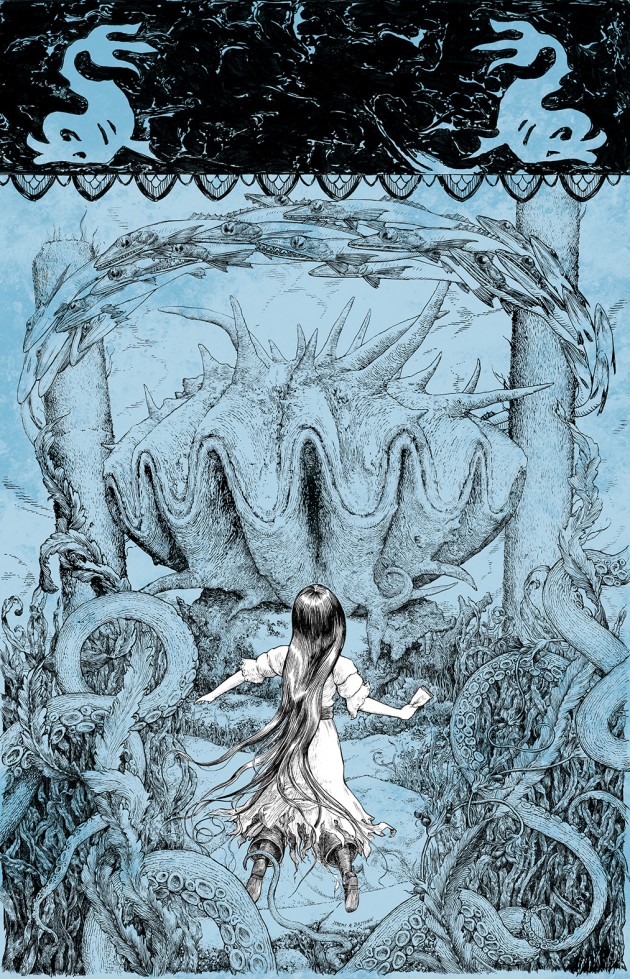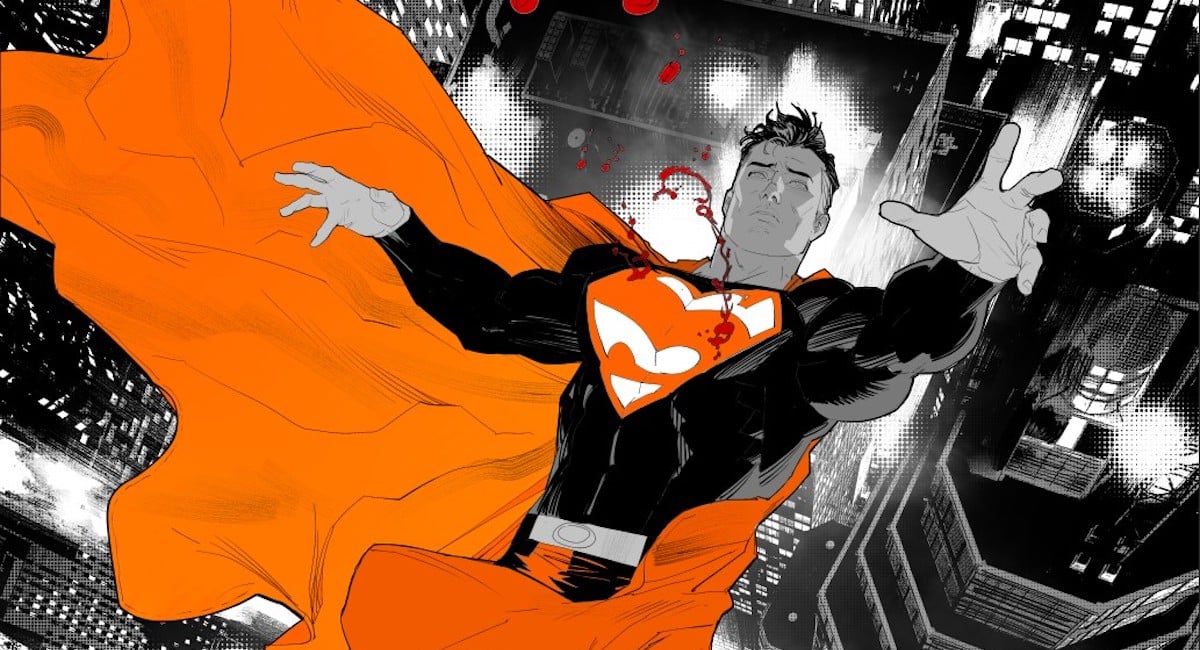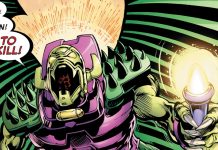§ I know this is hilarious but it is also an example of our nation’s moral decline when a child of 8 calls his local newspaper “Idiots. Jerks. Sh*tholes.” for cutting the comics page. In an impassioned plea, the child calls for the return of Frank and Ernest, Ziggy, Garfield, Close to Home, Peanuts and Dilbert. Prompted by his parents, he adds Nancy to the list before trailing off in a futile tirade of name calling.
On second thought, it is an even clearer sign of our nation’s moral decline to be cutting the comics from the newspapers at all.
§ Mel Crawford animator and artist on many a children’s comic that entertained post-baby boomers has passed away. Some of his work above.
§ Zombie Stan Lee Media is at it again! They’re trying to get the Supreme Court to listen to their claim that they own all of Marvel’s characters. They will not succeed. Daryl Dixon will stop them.
§ The new kids are taking over the comics.
§ Kelly Thompson is administering a poll to find the Top 50 Female Comic Writers and Artists of All-Time! She was inspired to do this after female creators had a poor showing on another CBR poll of greatest comics creators. As far as I’m concerned Lynda Barry is one of the all time greatest comics writers, let’s just get that out of the way. Alan Moore, Charles Schulz, Los Bros and Lynda Barry—those are my Top Five Comics Writers of all times.
§ When the ice melted for an afternoon, I unearthed a lode of old links I had salted away. I enjoyed this piece on Peter Bagge’s ‘Sweatshop’ which just got reissued from Dark Horse but which started life as a rather unlikely DC comics mini-series back in the early 2000s when DC put out a lot of unlikely things. But then They put a stop to it.
Bagge and Cavalieri assembled their own “sweatshop” to help Bagge put out a 22-page comic on a monthly basis, and one couldn’t ask for a more talented (and, again, unlikely) group of artists: While Bagge wrote every issue and drew most of the book, he was ably assisted by Stephen DeStefano, Bill Wray, Johnny Ryan and Stephanie Gladden, most of whom usually worked in a Bagge-like style (with the exception of Wray, who tended to draw the personal strips of the Sweatshop gang, adapting his style in a remarkably flexible way). Throughout the short run, real comics industry figures pop up to rub shoulders with Bagge and company’s fictional characters, which proves to be one of the many fun aspects of the book. While real cartoonists are name-dropped and discussed throughout, these are the celebrity cameos; were this an actual sitcom, they’d probably have played themselves, Extras-style.
§ This interview with cartoonist Erica Moen (Oh Joy, Sex Toy, NSFW) brings up a point: sometimes autobiographical comics don’t age all that well. She’s let her two collection of her webcomic DAR go out of print, although they are coming back in a compendium edition. I really enjoyed DAR but it was very, shall we say, honest about a certain point in her life. But she’s not that person any more.
They’re a time capsule of my life from the ages of 20-26 and, until “OJST,” that’s the comic I was best known for. The thing about turning a period of your life into a story for the public to consume is that, eventually, you grow out of the person you wrote about. I’m 31 now, turning 32 in June. Early 20s Erika doesn’t exist any more, but it’s sort of like she still does because people are reading about her in the present day. I mean, last year I turned 30 and bought an actual house with my husband — a pretty grown-up thing to do, right? And there, in the basement, were boxes of books chronicling my life as a stupid young adult. That’s the Erika people think of when they haven’t met me in real life. When my inventory of books was finally running out at the end of 2014, it just felt right to let that 20-year-old version of me go to sleep for a while. Originally, I was going to let them stay out of print, but now Matthew is doing this One Great Big Collection book that includes not just the “DAR” comics, but also almost all of the other autobio comics I did since I was about 17-18, and I’m making some brand new essay-like comics talking about my life in my 30s. So “DAR” will eventually come back in one book, but it’ll be part of a much bigger context. If “DAR” was a snapshot of my 20s, frozen in amber, this collection will show that people grow and change over time. Rather than being like this is who I am, it’ll have more of a “People grow and change over time” feeling.
§ Mark Waid and JG Jones are co-writing a new graphic novel for Boom! called Strange Fruit—it’s set in the South and deals with racism, among other topics. As white male creators, this subject matter and the title—which refers to lynching—got some blowback, but it is a case of write what you know, at least, plus it will look beautiful because JG Jones painted it.
Do you think having grown up in the South gives you both a little more insight into the racial tension at the center of “Strange Fruit?”
Jones: I don’t want to speak for Mark, but for me, these issues have always been fraught. In Sunday school, they taught us a song: “Red and yellow, black and white, they are precious in His sight.” But when the song was done, that sentiment seemed to evaporate pretty quickly. Look, treating a group of people as the “other” does not just dehumanize that group, it also dehumanizes you.
Waid: I think more than anything, it’s informed our mutual understanding of how casual and commonplace racism was when we were kids, which, looking back, is shocking, but living through that time, it was — however inexcusable in hindsight — an everyday part of the fabric of the South.
That said, neither J.G. nor I are claiming to ever really know — really know — what it’s like to endure that level of racism. The racial tension in “Strange Fruit” is a huge part of this story, but as two white guys, we’re not in the least interested in co-opting the story of an ethnicity not our own. What we are trying to do is be as historically accurate as possible, and that means some rough language and rough imagery.
§ And speaking of beautiful art, Jeremy Bastian is doing another Cursed Pirate Girl comic at long last! Cursed Pirate Girl Annual #1 will be 52 new pages for $9.99. Apparently a series of annual will eventually be released as Cursed Pirate Girl Volume 2. Bastian is a very slow artist but it’s worth the wait!










Tell ’em!
“Frank and Ernest, Ziggy, Garfield, Close to Home, Peanuts and Dilbert, … Nancy”
If that’s what’s left of the comics page, then it’s not worth saving. We’ve obviously fallen a long way from Calvin & Hobbes, The Far Side, Pogo, Liberty Meadows, The Boondocks, and anything else even slightly creative, intelligent, or subversive.
The problem of a comic “aging” isn’t so much for autobio comix as it is for journal comix. If you approach autobio as historical material, and identify it as such (like Alison Bechdel did with Fun Home), the readers will better understand the difference between you-then and you-now. For my not-exactly-autobio-but-it-started-out-that-way series (very NSFW) I’m making a point of putting dates on every episode, so people will understand that this episode is where my doppelganger was at 28, which is different from who I am today, which is different from who I was at 19, et cetera.
Yes Nick, this 8 year old was longing for more subversive material.
I didn’t know 8-year-olds were still reading comics!
Reminds me of how I felt when newspapers began dropping their adventure strips — in favor of gag-a-day strips like Garfield, Ziggy, and Frank and Ernest.
Comments are closed.